Are you looking for an alternative to freeing up counter space from those bulky cutting boards? Do you want a creative way to display the masterpiece of food-preparing objects that we’ve come to know and love? Wall-mounted cutting boards can be both a conversation piece and a practical solution for this age-old problem.
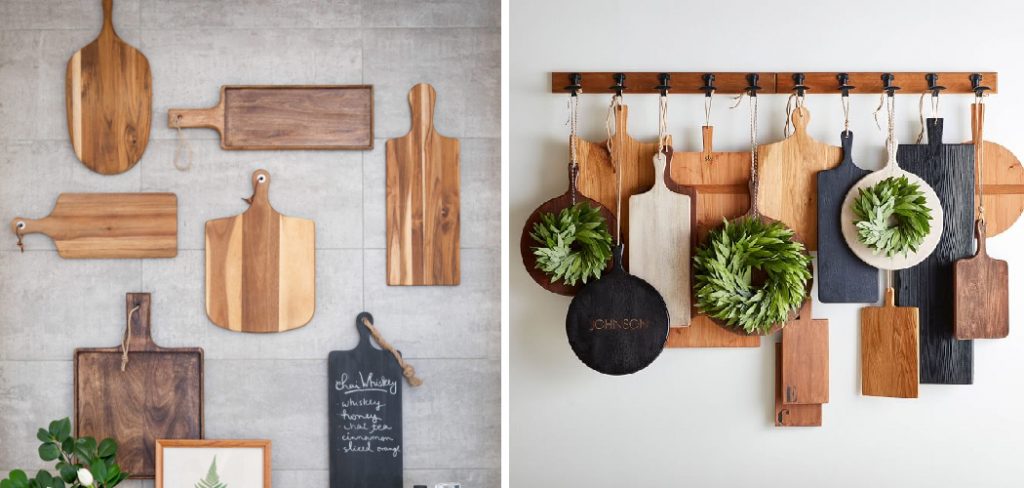
In this blog post on how to hang cutting board on wall, we’ll discuss how to hang your cutting board on the wall in such a way that it not only looks great but also maximizes its functionality!
Safety Precautions
Before getting started, it is important to note that you need to take certain safety precautions when installing a cutting board on the wall. First, you will need to make sure that the wall can support the weight of your cutting board. You may also want to consider using a stud finder to locate the studs in the wall and secure your cutting board with screws instead of nails, for added stability.
11 Step-by-step Guides on How to Hang Cutting Board on Wall:
Step 1: Choose a Suitable Location
Choose a wall that is free of any decorative items or other obstructions. The location should also be accessible so you can easily access the cutting board when necessary. It should also be near a power outlet if you plan on using electric kitchen tools.
If you plan on cutting vegetables, make sure that the location is near a sink or garbage disposal. This will make clean up much easier. But most importantly, make sure that the wall can support the weight of the cutting board.
Step 2: Gather Necessary Supplies
Gather the necessary supplies for hanging the cutting board. This includes screws, a drill, a spirit level, and measuring tape. You will also need a stud finder if you are planning on drilling into the wall. To hang the cutting board, you will need two heavy-duty brackets or an over-the-door hanger.
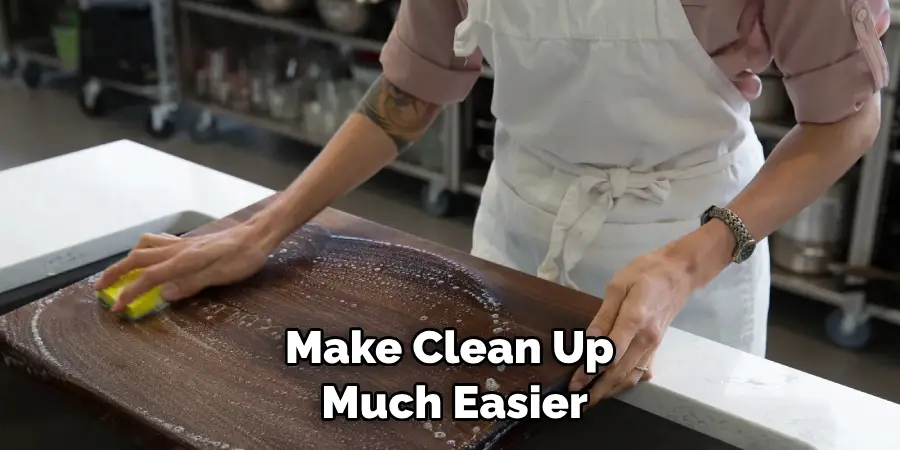
It’s also a good idea to have some painter’s tape or masking tape handy in case you need to mark the wall. This will help you avoid any accidental holes or marks during the installation process.
Step 3: Find the Studs
Using a stud finder, locate the studs in your chosen wall location. This will help you ensure that your cutting board is secured properly with screws and not just held up by wall anchors alone. It also helps ensure that it is level and securely attached to the wall. This is especially important for heavier cutting boards.
It’s also important to check the depth of your studs before drilling. But if your wall doesn’t have studs, you can use heavy-duty anchors. This is often a good option for drywall walls. If you are mounting a cutting board that is particularly heavy, it’s best to use a stud-mounted bracket.
Step 4: Measure Your Board
Once you have located the studs, measure the exact size of your cutting board to ensure that it fits securely within the area marked off by the studs. This will also give you an idea of how many screws you’ll need to hang it safely on the wall.
This is important because you want to make sure that the cutting board is secure and can handle the weight of food items. It is also important to check that the board is level by using a spirit level. This will help ensure that it hangs correctly and evenly on the wall.
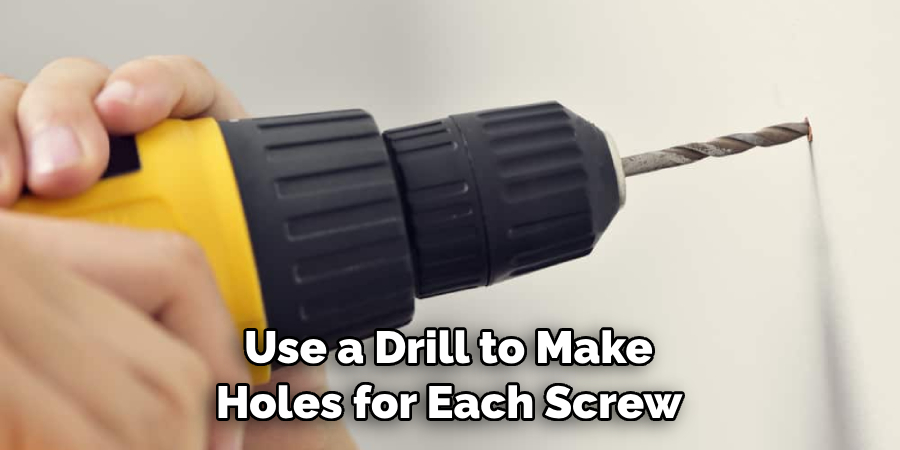
Step 5: Drill Into The Wall
Use a drill to make holes for each screw at least one inch deep into the wall where the studs are located. But if you’re using wall anchors, make sure to read the instructions carefully before drilling. Then insert a screw into each drilled hole and tighten them securely into the wall.
This is important to make sure that the screws are firmly tightened into the wall so that they can support the weight of your cutting board. However, be careful not to overtighten the screws as this could cause damage to the wall or studs.
Step 6: Secure The Cutting Board In Place
Once you have finished drilling the holes, use a screwdriver to secure the cutting board in place with screws. Make sure that the screws are firmly in place and don’t move around when you apply pressure to them. It’s also important to check that the screws are not too long so that they don’t come out of the other side of the cutting board.
So be sure to select screws that are the right size. If necessary, use adhesive to further secure the screws in place. This will help to ensure that the cutting board is firmly mounted on the wall.
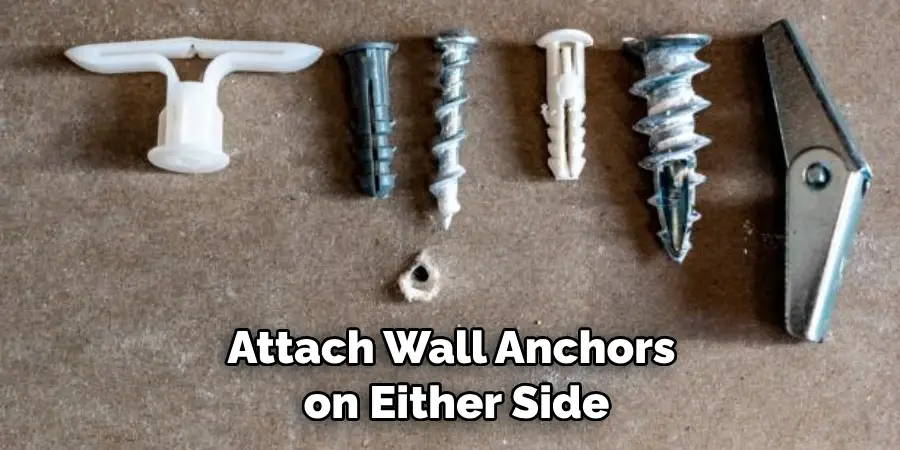
Step 7: Attach Wall Anchors
If your location doesn’t have any studs or if it is too close to a wall corner, attach wall anchors on either side of your cutting board for added security. It is important not to over-tighten these as this could cause damage to the drywall behind your cutting board.
It is also important to make sure that the screws are not too long so that they don’t come out of the other side of the cutting board. This is why it’s important to choose the right size screws for your project.
Step 8: Hang Up Your Cutting Board
Hang up the cutting board on the wall using the screws and anchors. Make sure to test the weight of the board to ensure that it is firmly in place before you start cutting food on it. But be sure not to hang it too high.
You want it at a comfortable height that is easy to reach and use without straining your back or arms. Although you can hang it higher up if you feel comfortable enough to do so. It is also important to make sure that the board is level before you start using it.
Step 9: Add Accessories (Optional)
If desired, add any accessories such as a knife holder or towel holder to your cutting board. This will both enhance its functionality and make it look more aesthetically pleasing when hanging on your wall. If you choose to add a knife holder, make sure it is securely attached and cannot slide off the cutting board. You should also consider adding a wall plug-in for your electric kitchen tools.
Step 10: Label Your Board (Optional)
Adding a label or tag to your cutting board can help inform anyone who uses it what type of food should be prepared on each side of the board – this is especially important for people who suffer from allergies or dietary restrictions.
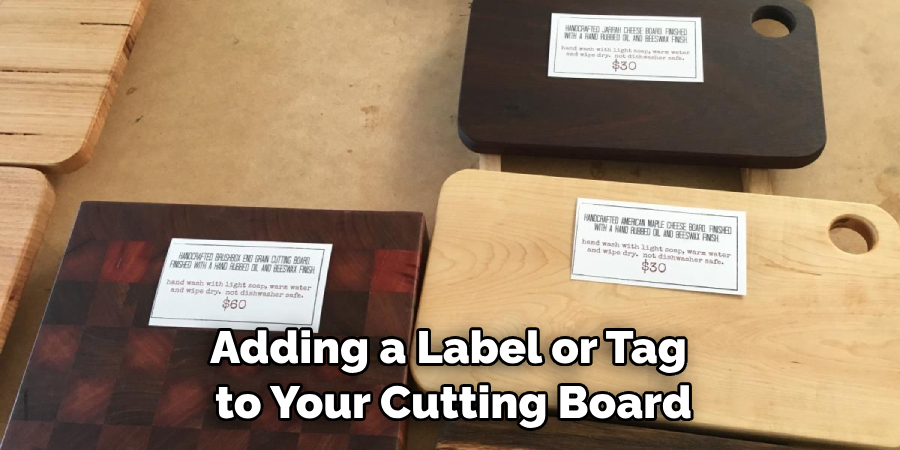
Always use a food-safe marker and wipe the board clean after labeling. It is also important to check the type of paint or varnish used on your board prior to labeling. This will ensure that the label stays intact and does not come off over time.
Step 11: Enjoy Your New Cutting Board
Now that you have successfully hung up your cutting board, enjoy the newfound convenience of having your cutting board within arm’s reach and take advantage of its new decorative feature in your kitchen or dining area! Be sure to clean the cutting board after each use and store it in a safe place when not in use.
And if you ever need to remove it, make sure to use a drill and the correct screws so that it can be easily taken down. It is also important to check the wall for any damage each time you hang or take down your cutting board.
We hope this blog post on how to hang cutting board on wall has been useful for you. With a few simple tools and supplies, you are now ready to display your cutting board with pride! Thanks for reading!
Frequently Asked Questions
Q: What Kind of Screws Should I Use to Hang a Cutting Board?
A: It is important to choose the correct size and type of screw for your cutting board. If you are mounting a heavy cutting board, it is important to use stud-mounted screws that are at least one inch deep into the wall.
For lighter boards, you can use heavy-duty anchors or smaller screws. Be sure to check the instructions on the package of screws and anchors before using them so that they will fit securely in place and not cause any damage to either the wall or cutting board.
Q: How Do I Clean My Cutting Board?
A: It is important to clean your cutting board after each use to prevent the buildup of bacteria and other contaminants. You can easily wipe down your cutting board with warm water and mild soap.
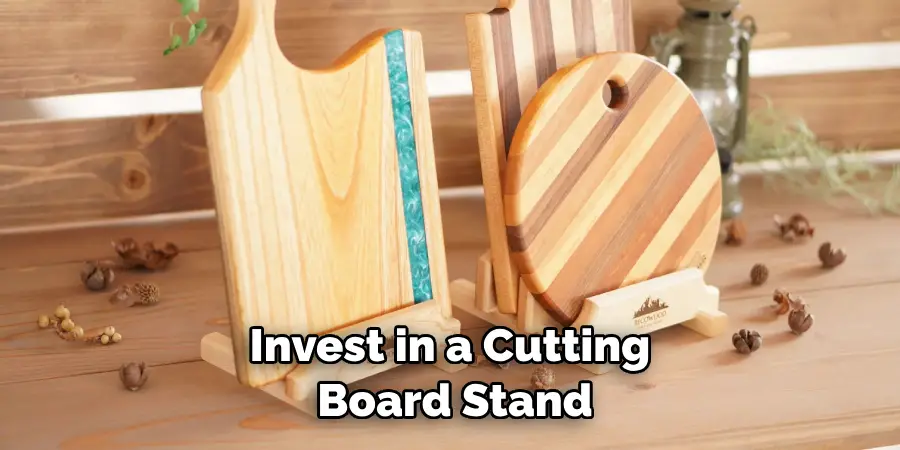
You may also need to oil it occasionally with mineral oil or food-grade mineral oil to keep it from drying out. Be sure to use a soft cloth when applying the oil, and don’t forget to wipe off any excess so that it doesn’t become a breeding ground for bacteria.
Q: Should I Hang My Cutting Board On The Wall?
A: Hanging your cutting board on the wall can help save space in your kitchen or dining area and make it more easily accessible. It is also important to make sure that the board is securely attached so that it can handle the weight of food items without causing damage to either the wall or the cutting board itself.
Lastly, take into consideration how much life you need for your cutting board; if you plan on moving frequently, it may be better to invest in a cutting board stand or tray instead.
Conclusion
In conclusion, hanging a cutting board on the wall can be a great organizational tool and also offers some visual appeal. Remember to make sure there is enough space between each hook for all of your boards. Be sure to measure, mark, and drill when hanging hooks, and choose enough screws to securely hang your board.
If you engage in this task with care and focus it’s easy to end up with strong, well-positioned cutting board holders that will last for years.
Now that you have successfully installed your custom cutting board organization system, why not spend some time organizing your deep bathroom drawers?
You can even use the same drawer dividers that you used for the prior installation for an expeditious sorting process! Taking control of those easily cluttered drawers will create order in your kitchen and provide peace of mind when reaching for everyday items.
Always remember that the same level of care and attention to detail should be applied when hanging anything on a wall. We hope this blog post on how to hang cutting board on wall gives you all the information needed to easily hang your cutting boards on the wall!

